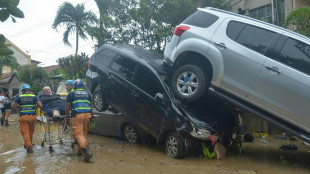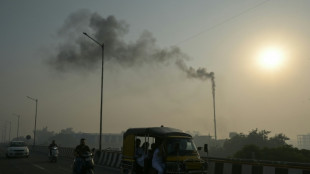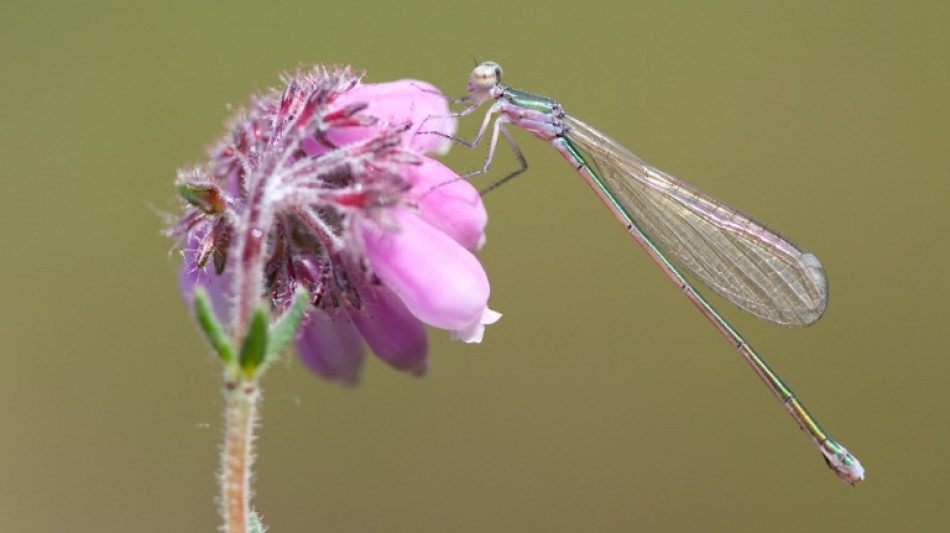
-
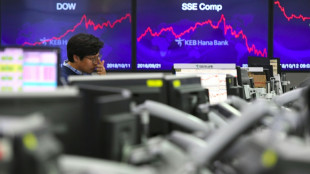 Asian markets sink as tech bubble fears grow
Asian markets sink as tech bubble fears grow
-
Beyond limits: Croatian freediver's breathtaking record

-
 Tottenham supporting Udogie after alleged gun threat in London
Tottenham supporting Udogie after alleged gun threat in London
-
Thunder roll Clippers to stay unbeaten as SGA keeps streak alive

-
 In appeal, Australian mushroom murderer alleges 'miscarriage of justice'
In appeal, Australian mushroom murderer alleges 'miscarriage of justice'
-
Toyota hikes profit forecasts 'despite US tariffs'

-
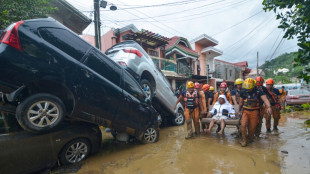 Typhoon death toll soars past 90 in the Philippines
Typhoon death toll soars past 90 in the Philippines
-
Ex-France lock Willemse challenges Meafou to become 'the bully'

-
 Ukrainians to honour sporting dead by building country they 'died for': minister
Ukrainians to honour sporting dead by building country they 'died for': minister
-
At least 7 dead after UPS cargo plane crashes near Louisville airport
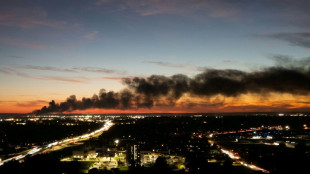
-
 US Supreme Court hears challenge to Trump tariff powers
US Supreme Court hears challenge to Trump tariff powers
-
US government shutdown becomes longest in history

-
 India's Modi readies bellwether poll in poorest state
India's Modi readies bellwether poll in poorest state
-
Green goals versus growth needs: India's climate scorecard
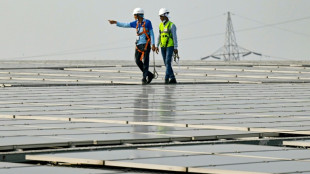
-
 Where things stand on China-US trade after Trump and Xi talk
Where things stand on China-US trade after Trump and Xi talk
-
Sri Lanka targets big fish in anti-corruption push

-
 NY elects leftist mayor on big election night for Democrats
NY elects leftist mayor on big election night for Democrats
-
Injured Jordie Barrett to miss rest of All Blacks tour

-
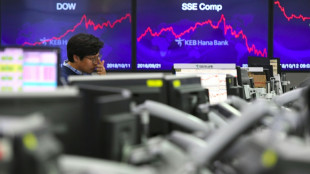 Asian markets tumble as tech bubble fears grow
Asian markets tumble as tech bubble fears grow
-
Pay to protect: Brazil pitches new forest fund at COP30
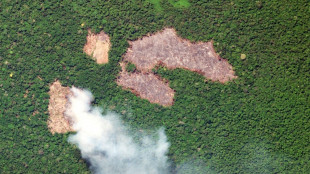
-
 Australia pick 'impressive' Weatherald in first Ashes Test squad
Australia pick 'impressive' Weatherald in first Ashes Test squad
-
Iraq's social media mercenaries dying for Russia

-
 Young leftist Trump foe elected New York mayor
Young leftist Trump foe elected New York mayor
-
Concerns at ILO over expected appointment of close Trump advisor
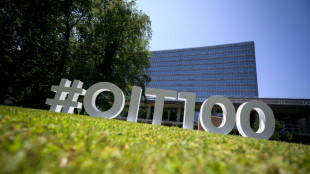
-
 Venus Williams to return to Auckland Classic at the age of 45
Venus Williams to return to Auckland Classic at the age of 45
-
No deal yet on EU climate targets as COP30 looms

-
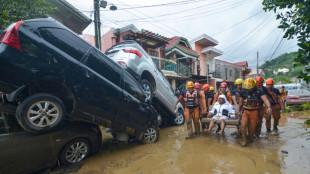 Typhoon death toll climbs to 66 in the Philippines
Typhoon death toll climbs to 66 in the Philippines
-
NATO tests war preparedness on eastern flank facing Russia

-
 Uncapped opener Weatherald in Australia squad for first Ashes Test
Uncapped opener Weatherald in Australia squad for first Ashes Test
-
Liverpool down Real Madrid in Champions League, Bayern edge PSG

-
 Van Dijk tells Liverpool to keep calm and follow Arsenal's lead
Van Dijk tells Liverpool to keep calm and follow Arsenal's lead
-
PSG left to sweat on injuries to Dembele and Hakimi

-
 Reddit, Kick to be included in Australia's social media ban
Reddit, Kick to be included in Australia's social media ban
-
Ex-Zimbabwe cricket captain Williams treated for 'drug addiction'

-
 Padres ace Darvish to miss 2026 MLB season after surgery
Padres ace Darvish to miss 2026 MLB season after surgery
-
Diaz hero and villain as Bayern beat PSG in Champions League showdown

-
 Liverpool master Real Madrid on Alexander-Arnold's return
Liverpool master Real Madrid on Alexander-Arnold's return
-
Van de Ven back in favour as stunning strike fuels Spurs rout

-
 Juve held by Sporting Lisbon in stalling Champions League campaign
Juve held by Sporting Lisbon in stalling Champions League campaign
-
New lawsuit alleges Spotify allows streaming fraud

-
 Stocks mostly drop as tech rally fades
Stocks mostly drop as tech rally fades
-
LIV Golf switching to 72-hole format in 2026: official

-
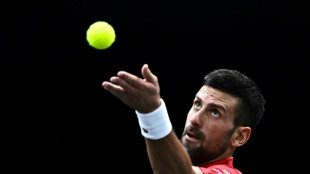 'At home' Djokovic makes winning return in Athens
'At home' Djokovic makes winning return in Athens
-
Manchester City have become 'more beatable', says Dortmund's Gross

-
 Merino brace sends Arsenal past Slavia in Champions League
Merino brace sends Arsenal past Slavia in Champions League
-
Djokovic makes winning return in Athens
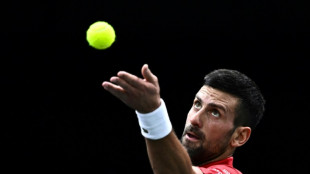
-
 Napoli and Eintracht Frankfurt in Champions League stalemate
Napoli and Eintracht Frankfurt in Champions League stalemate
-
Arsenal's Dowman becomes youngest-ever Champions League player

-
 Cheney shaped US like no other VP. Until he didn't.
Cheney shaped US like no other VP. Until he didn't.
-
Pakistan edge South Africa in tense ODI finish in Faisalabad


After miraculous comeback, damselfly in distress again
When the damselfly reappeared in France in 2009 after a 133-year absence, it was considered a small miracle.
But the dragonfly's smaller cousin hasn't been seen in four years, sparking fresh fears it may be gone for good -- a worrying indicator of the health of the world's precious wetlands in which it breeds.
Damselflies face menaces on multiple fronts. In Asia, the wetlands and jungles in which they live are often cleared for crops like palm oil. In Latin America their habitats are razed to build houses and offices.
In Europe and North America, pesticides, pollutants and climate change have posed the biggest threat.
So when the Nehalennia speciosa damselfly was spotted in wetlands in the Jura region of eastern France for the first time since 1876, scientists were overjoyed -- calling the rediscovery an "ecological scoop".
But that comeback was probably only a "remission from the collapse that our biodiversity is suffering," said naturalist Francois Dehondt.
The last confirmed sighting was in 2019, when a severe drought gripped the Jura, and experts fear there might not be a second comeback.
"The water source that shelters the insect was reduced to nothing" by drought, Dehondt wrote in France's Le Monde newspaper in December.
In 2020, water levels remained low. The following year, some water returned to the bogs of the Jura where a dozen or so damselflies had been spotted in 2009.
And then last year -- the hottest on record in France -- the region was once again parched.
Damselflies were nowhere to be seen.
- 'Warning lights' -
With a slender green-blue body that resembles bamboo and delicate translucent wings, the Nehalennia speciosa might look like a dragonfly to the untrained eye.
But at about 25 millimetres (less than an inch) long, Europe's smallest damselflies don't fly as well and often need to be shaken from bushes to be seen, making them very hard to detect.
The International Union for Conservation of Nature (IUCN) said 16 percent of all 6,016 dragonfly and damselfly species globally risk extinction. In France, the damselfly is classified as "critically endangered".
France's Office for Insects and their Environment (OPIE), which is in charge of monitoring damselflies, suspects the subspecies has disappeared again.
"Given the state of environmental degradation and drought that we have seen for years, (the likelihood of seeing a damselfly in the Jura) is really very compromised," OPIE's Xavier Houard told AFP.
"The warning lights are red. But it's too soon to be completely certain," he added.
The agency will only confirm a "proven disappearance" of a species after 25 years of "non-observation" during which thorough searches are carried out.
And Houard has not lost hope just yet.
"The species has already demonstrated its ability to pass under the radar of observers" for over a century, he said.
- World Wetlands Day -
The demise of France's damselflies further underpins how vulnerable the country's wetlands are -- a reality across Europe and indeed the world.
"Globally, these ecosystems are disappearing three times faster than forests," IUCN director general Bruno Oberle said in 2021 when the organisation updated its Red List of Threatened Species.
Since 1900 an estimated 64 percent of the world's wetlands -- which include lakes, rivers, marshes, lagoons and peat bogs -- have disappeared, according to the Ramsar Convention on Wetlands treaty.
Wetlands are crucial for the planet's health. They store 25 percent of the world's carbon and provide clean water and food. Up to 40 percent of the world's species live and breed in wetlands, according to the United Nations.
Yet a quarter are in danger of extinction.
The UN -- which marks World Wetlands Day on Thursday -- said there is an "urgent need" to restore 50 percent of destroyed wetlands by 2030.
In the meantime, France's scientists continue to scour for the elusive damselfly, whose very presence is "a wonderful indicator... of the health of wetlands", according to Houard.
Their disappearance would be nothing short of an "alarm bell", he added.
O.Mousa--SF-PST


